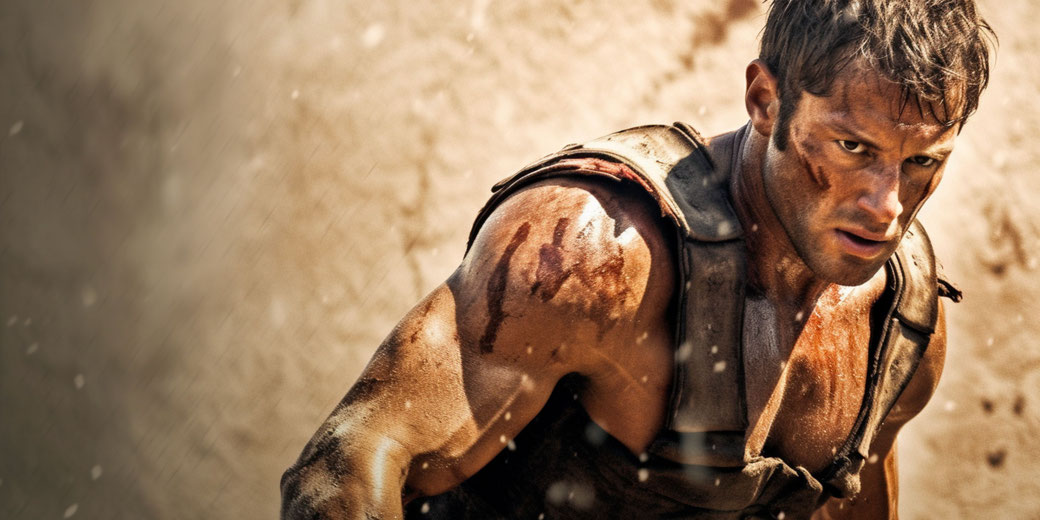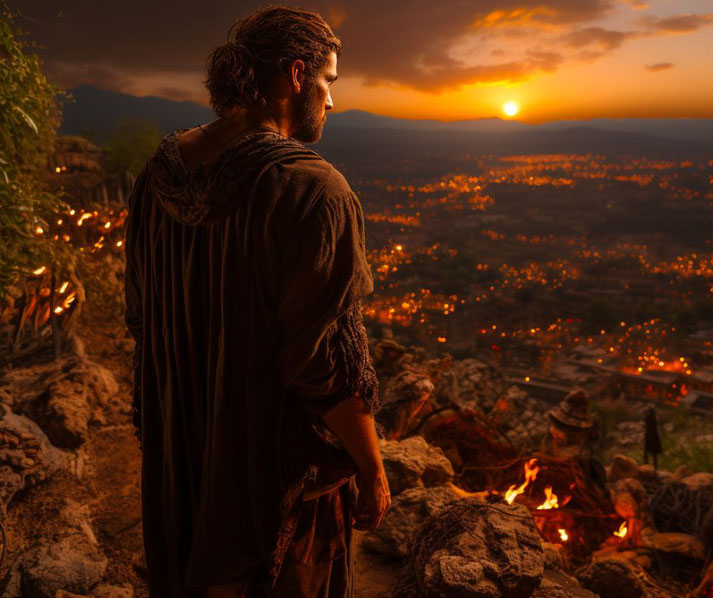Spartacus’ war: An enslaved gladiator's desperate fight for freedom against the might of Rome

On the slopes of Mount Vesuvius in Italy, a Thracian slave led a rebellion that would challenge the might of Rome. Spartacus quickly became the embodiment of defiance and the struggle for freedom against unjust power, even in the face of unsurmountable odds.
So, what led this gladiator to defy the might of an empire?
How was he able to lead an army of slaves to defeat the legions?
And did he ever really have a chance of gaining the freedom he was fighting for?
Where did Spartacus come from?
Sources about Spartacus's origins are limited, but those that are available suggest he was born around 111 BCE in the region known as Thrace, which overlaps modern-day Bulgaria, Greece, and Turkey.
His early life is largely undocumented, but it is generally agreed upon by historians that he was of Thracian origin and may have once served as an auxiliary in the Roman army before desertion led to his capture and subsequent enslavement.
By 73 BCE, Spartacus had been enslaved and transported to a gladiatorial school in Capua, near present-day Naples, which was run by Lentulus Batiatus.
The conditions in such schools were brutal; slaves were forced to train rigorously and fight in gladiatorial games for the entertainment of the Roman populace.
Spartacus's training as a murmillo—a type of gladiator armed with a sword and shield—would have been arduous and unforgiving, designed to mold him into a lethal combatant for public spectacles.
The life of a gladiator was paradoxical; they were simultaneously admired for their prowess and despised for their status as slaves.
Spartacus, among others, was subjected to rigorous physical training, a regimen designed to maximize strength, endurance, and combat skills.
These fighters were commodities, valuable yet expendable, and their lives were spent honing the art of death for sport.

Spartacus' escape and the start of the rebellion
In 73 BCE, Spartacus, along with a group of 70 fellow gladiators, orchestrated a daring escape from the ludus of Lentulus Batiatus.
Seizing simple kitchen tools as their initial weapons, they fought their way to freedom, proving themselves to be as formidable outside the arena as they were within it.
Once free, they took refuge on Mount Vesuvius, where they began to attract a following of other slaves seeking liberation from the chains of servitude.
As the revolt gained momentum, the number of followers swelled rapidly. Dispossessed farmers, shepherds, and others who had been marginalized by the harsh inequalities of Roman society joined Spartacus's cause.
The group, now numbering in the thousands, turned their makeshift encampment into a stronghold.
Spartacus, with a clear vision of challenging Roman authority, aimed to strike at the very heart of the Republic's reliance on slave labor.
The Roman Senate, initially dismissive of the rebellion as a minor disturbance, soon realized the gravity of the situation as Spartacus's forces overcame successive Roman military detachments sent to quell the uprising.

Surprising victories over the armies of Rome
The first significant confrontation occurred later in 73 BCE, when a Roman force under the command of Praetor Gaius Claudius Glaber besieged Spartacus's position on Vesuvius.
In a display of tactical ingenuity, Spartacus's forces launched a surprise attack from behind, routing the Roman forces and capturing their equipment.
This victory was a pivotal moment, bolstering the morale of the rebels and attracting even more slaves to the cause.
Following this victory, Spartacus's army engaged and defeated a second expedition, this time led by Praetor Publius Varinius.
Varinius was caught off guard and his forces were scattered, with Spartacus's troops capturing the Roman camp and its supplies, further bolstering their armaments and causing significant embarrassment to Rome.
In 72 BCE, Spartacus's forces continued their campaign, demonstrating their growing strength by defeating two consular armies at the Battle of Picenum in Central Italy.
This victory was significant as it showcased the ability of the slave army to stand toe-to-toe with the formal military might of Rome.
The success of Spartacus's forces against such prestigious opposition sent shockwaves through the Roman Senate, which could no longer view the rebellion as a mere slave uprising but as a civil war.
The movement of Spartacus's army northward towards the Alps suggested a strategic intent to leave the Italian peninsula.
However, for reasons not entirely clear, upon reaching the foothills of the Alps, the slave army turned back south.
This decision led to a series of engagements throughout the Italian countryside, where Spartacus's forces continued to win battles, including a notable victory near Modena where they defeated the governor of Cisalpine Gaul, Gaius Cassius Longinus.
The key to Spartacus' military success
Spartacus's leadership qualities emerged distinctly as the slave revolt unfolded.
He was not only a skilled fighter but also a strategist and an inspirer of people. His ability to rally a disparate group of slaves, gladiators, and other disenfranchised individuals into a cohesive fighting force was remarkable.
He instilled in them a sense of purpose and a belief in the possibility of freedom, which was a powerful motivator.
His leadership was characterized by a combination of tactical acumen, physical prowess, and an equitable treatment of his followers, which earned him their respect and loyalty.
Tactically, Spartacus demonstrated a keen understanding of both Roman military tactics and the use of terrain.
His maneuvers often relied on the element of surprise and the mobility of his forces.
The use of guerrilla tactics, hit-and-run engagements, and the strategic occupation of defensible positions allowed his army to win several engagements against the Roman legions.
Moreover, Spartacus's army was known for its discipline, a trait not commonly associated with rebellious slaves.
He understood that to maintain cohesion and to stand a chance against the well-trained Roman legions, his forces needed to be orderly and follow a command structure.
The captured equipment from defeated Roman forces was redistributed and utilized effectively, turning a ragtag group of escapees into a more traditional army capable of confronting Rome's might.
Spartacus also showed a level of restraint and strategic foresight that was unusual for a rebellion of this nature.
He reportedly discouraged his followers from unnecessary cruelty and aimed to maintain a moral high ground, which helped in maintaining a positive image of the rebellion and in attracting more support.
His decision to not march on Rome itself, despite having a clear path at one point, suggests a level of strategic caution; he may have understood that a direct assault on the capital would bring about a swift and overwhelming response from the Roman state.

How Spartacus was finally defeated
After a series of victories that had amplified the threat of the slave rebellion in the eyes of the Roman Senate, the tide began to turn against Spartacus.
The Roman Republic, recognizing the severity of the threat, appointed Marcus Licinius Crassus to lead a determined and professional campaign to suppress the uprising.
Crassus, a man of considerable wealth and ambition, was given eight new legions and took a hard line against the insurrection.
He implemented strict discipline in his ranks, reviving the ancient punishment of decimation, where every tenth man was put to death in units that had shown cowardice or indiscipline.
This draconian measure restored order and fear within the Roman legions and prepared them for the confrontations ahead.
The first significant blow to Spartacus's forces came when Crassus managed to trap a portion of the rebel army in the region of Lucania, defeating them in a series of engagements.
Crassus's strategy involved the construction of a fortified wall across the isthmus of Rhegium, effectively cutting off Spartacus's escape route to Sicily, where he had hoped to find refuge and possibly reinforcements.
As Crassus tightened his grip, the Senate, anxious about Crassus's growing power and the prolonged duration of the conflict, called upon Pompey the Great, who was returning from Spain, and Lucullus, who was arriving from Macedonia, to assist in the final defeat of the slave army.
This political maneuvering added pressure on Crassus to conclude the war swiftly.
The decisive moment came at the Battle of the Siler River in 71 BCE. Spartacus's forces, though significantly outnumbered and outmaneuvered, engaged Crassus's legions in a desperate last stand. Spartacus, according to historical accounts, made a valiant effort to reach Crassus himself during the battle, perhaps hoping that killing the Roman commander would sow enough confusion to turn the tide.
However, he was ultimately unable to break through the Roman lines and was killed in the fierce fighting, his body never to be found.
Following this final battle, the remnants of the slave army were hunted down. Those captured were executed by crucifixion along the Appian Way, from Capua to Rome, serving as a chilling display of Roman vengeance and a warning to any who would dare rise up against the Republic.
The defeat of Spartacus's rebellion was complete, and the Third Servile War came to a grim end.
The rebellion had demonstrated the potential for slaves to challenge the Roman status quo, but its failure also underscored the overwhelming military and political might of Rome, which would remain unchallenged for centuries to come.
What do you need help with?
Download ready-to-use digital learning resources
Copyright © History Skills 2014-2025.
Contact via email
With the exception of links to external sites, some historical sources and extracts from specific publications, all content on this website is copyrighted by History Skills. This content may not be copied, republished or redistributed without written permission from the website creator. Please use the Contact page to obtain relevant permission.





